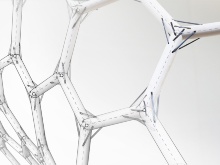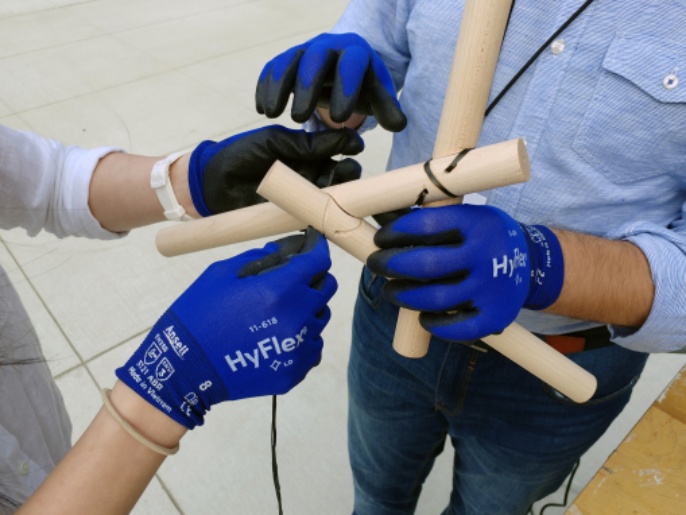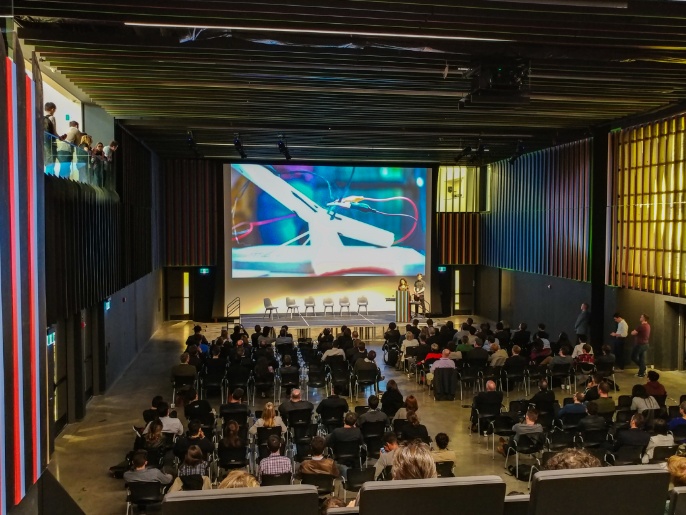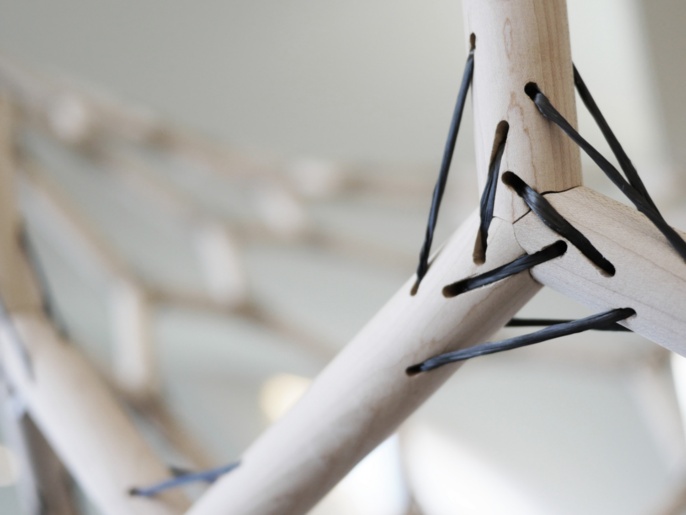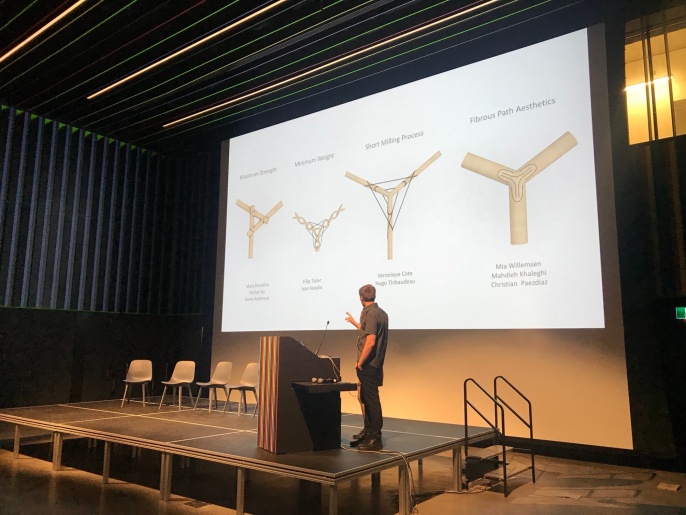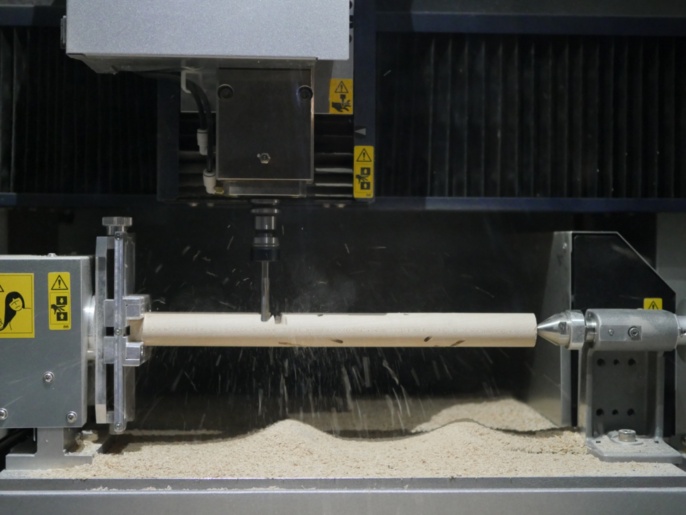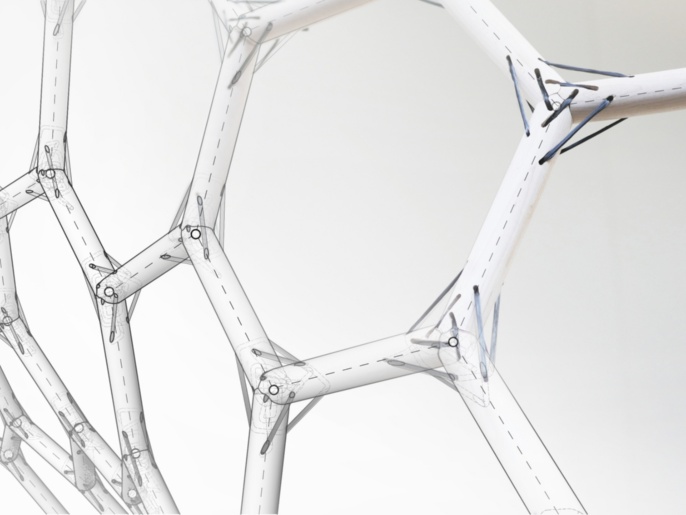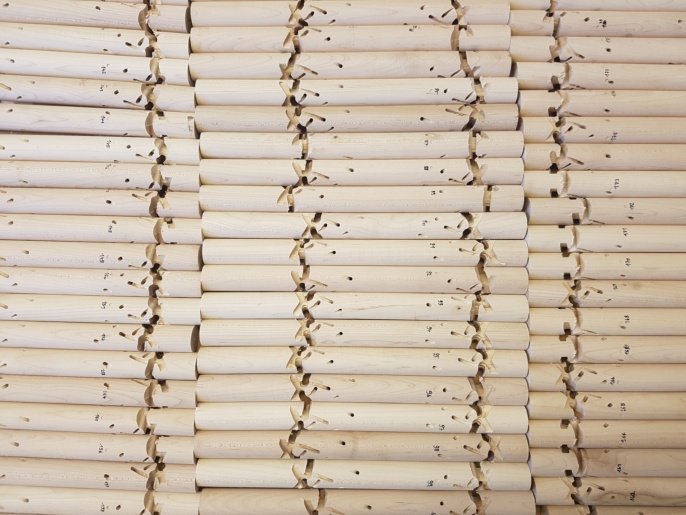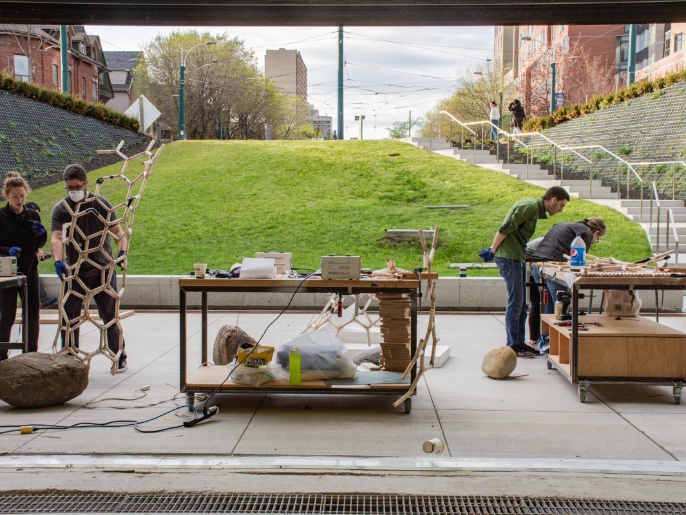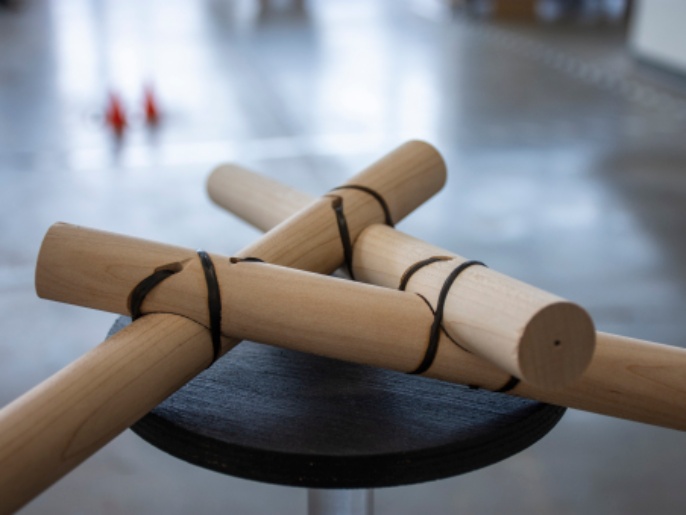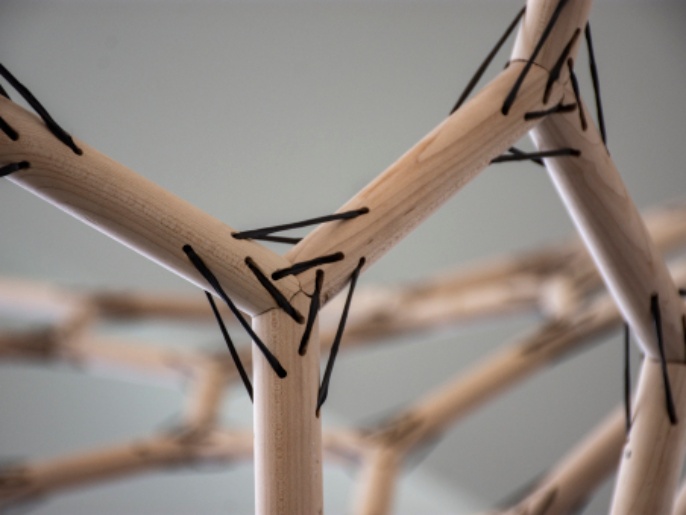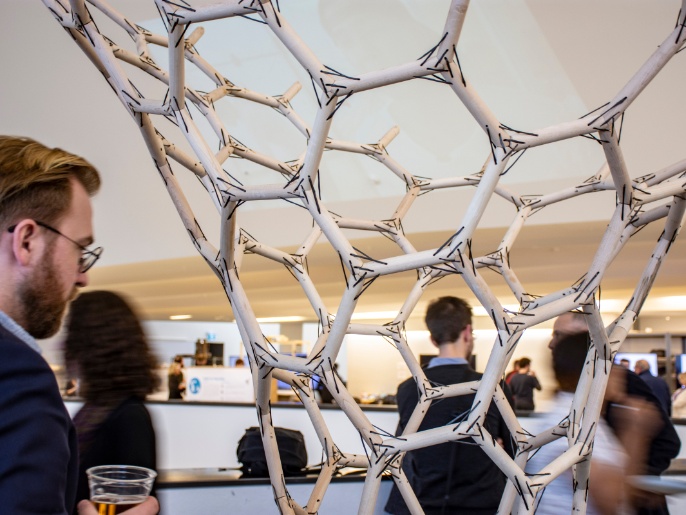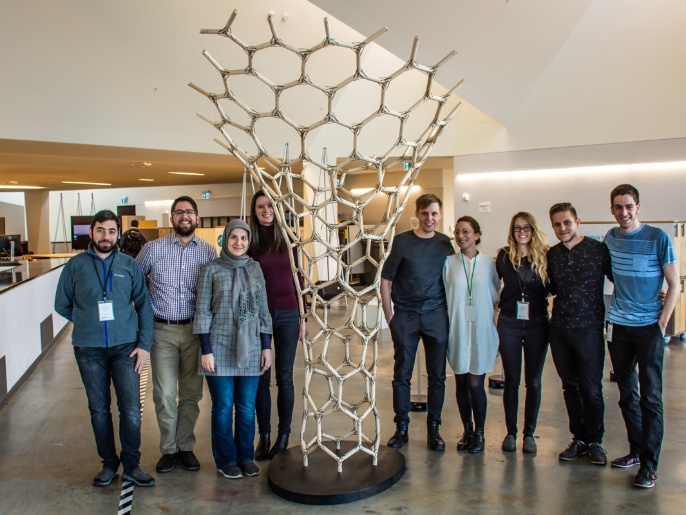Smart Geometry 2018
Timber Construction is a field of substantial ongoing research and is playing again an increasingly important role in architecture. Current challenges in this highly advanced industry include the need for stronger and more adaptable joining techniques; especially for lightweight, material efficient structures.
Fibrous joints can form bending resistant connections in lightweight timber structures of complex geometries. Fibre orientations in those connections can be intricately designed, controlled and manufactured within a vast multidimensional solution space as a function of current CNC technology and formability of fibres. This allows the adaptation of joints to stress-concentrations and force-directions using computational design algorithms to negotiate aspects of structure, material efficiency, aesthetics and fabrication; directly linking computational intelligence with materialisation processes.
For this cluster the goal is to find out how fibrous timber joints can be realised in irregular timber grid-shells. Attendees will be included in the full fabrication process of a 1:1 demonstrator. Additional knowledge transfer and hands-on experimentation sessions will encourage attendees to explore and discuss novel applications, strategies and iterations of fibrous connections and their inherent computational logics.
ICD Institute for Computational Design and Construction
Dominga Garufi, Hans Jakob Wagner (Workshop Champions)
Prof. Achim Menges, Dylan Marx Wood, Tobias Schwinn
Participants
Christian Paez Diaz, Filip Tisler, Hugo Thibaudeau, Ivan Vasyliv, Mahdieh Khaleghi, Prof. Mark Donofrio, Mia Willemsen, Rachel Au, Ramy Aydarous, Veronique Cote
Organized and Supported by
John F. Daniels Faculty of Architecture, University of Toronto
Photos
Wagner Hans Jakob / ICD
Ramy Aydarous
SmartGeometry
Timber Construction is a field of substantial ongoing research and is playing again an increasingly important role in architecture. Current challenges in this highly advanced industry include the need for stronger and more adaptable joining techniques; especially for lightweight, material efficient structures.
Fibrous joints can form bending resistant connections in lightweight timber structures of complex geometries. Fibre orientations in those connections can be intricately designed, controlled and manufactured within a vast multidimensional solution space as a function of current CNC technology and formability of fibres. This allows the adaptation of joints to stress-concentrations and force-directions using computational design algorithms to negotiate aspects of structure, material efficiency, aesthetics and fabrication; directly linking computational intelligence with materialisation processes.
For this cluster the goal is to find out how fibrous timber joints can be realised in irregular timber grid-shells. Attendees will be included in the full fabrication process of a 1:1 demonstrator. Additional knowledge transfer and hands-on experimentation sessions will encourage attendees to explore and discuss novel applications, strategies and iterations of fibrous connections and their inherent computational logics.
ICD Institute for Computational Design and Construction
Dominga Garufi, Hans Jakob Wagner (Workshop Champions)
Prof. Achim Menges, Dylan Marx Wood, Tobias Schwinn
Participants
Christian Paez Diaz, Filip Tisler, Hugo Thibaudeau, Ivan Vasyliv, Mahdieh Khaleghi, Prof. Mark Donofrio, Mia Willemsen, Rachel Au, Ramy Aydarous, Veronique Cote
Organized and Supported by
John F. Daniels Faculty of Architecture, University of Toronto
Photos
Wagner Hans Jakob / ICD
Ramy Aydarous
SmartGeometry


